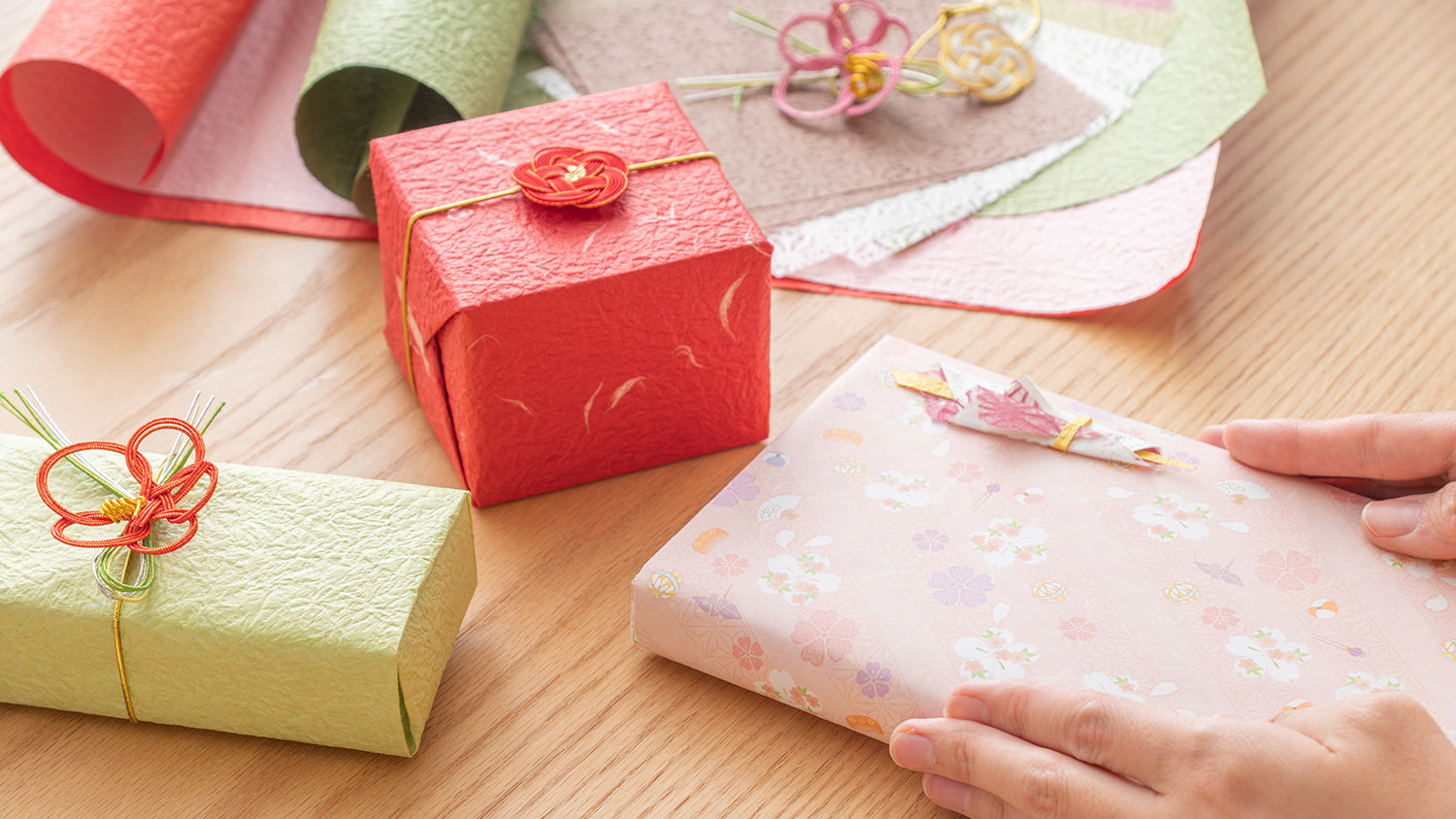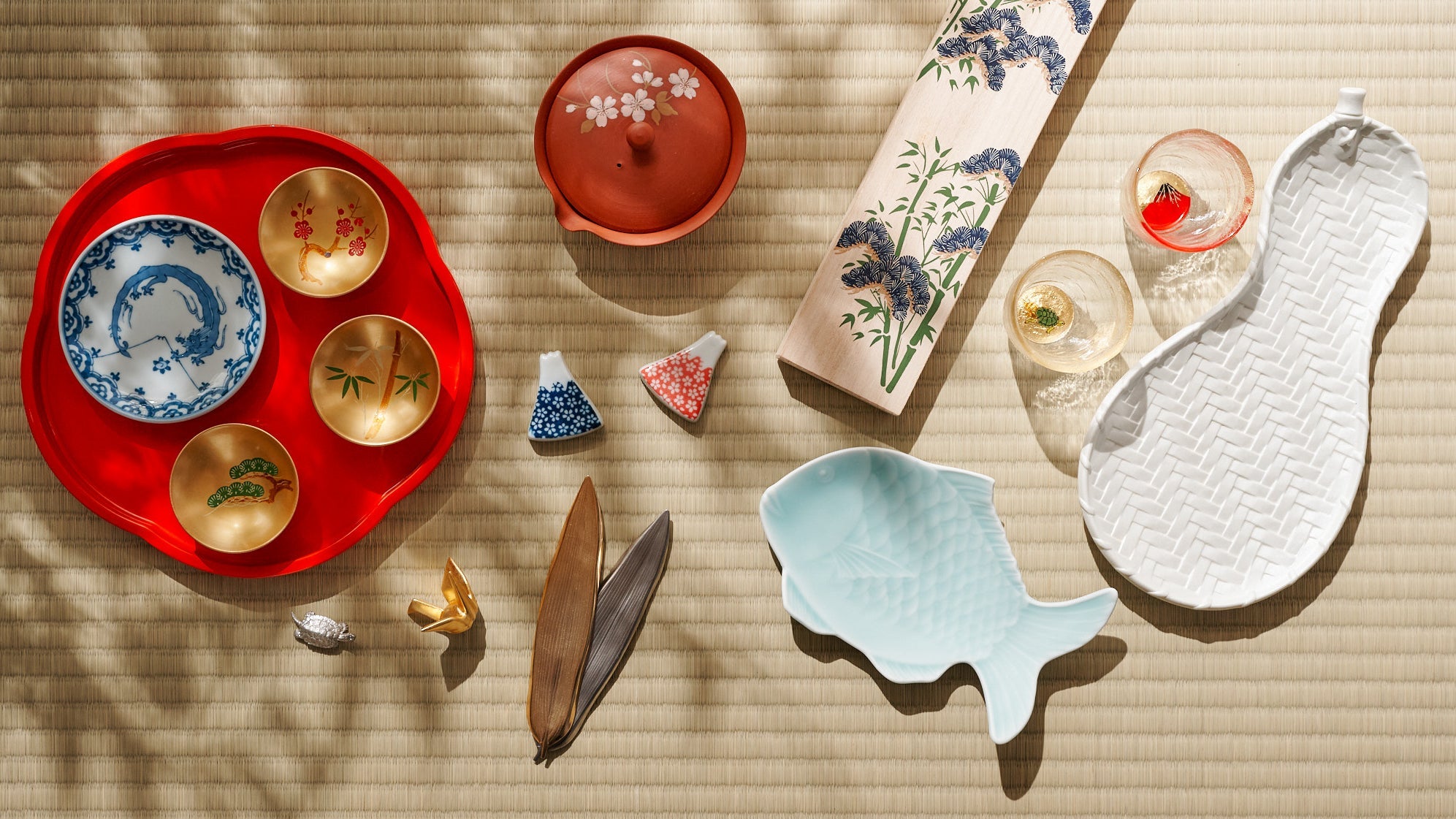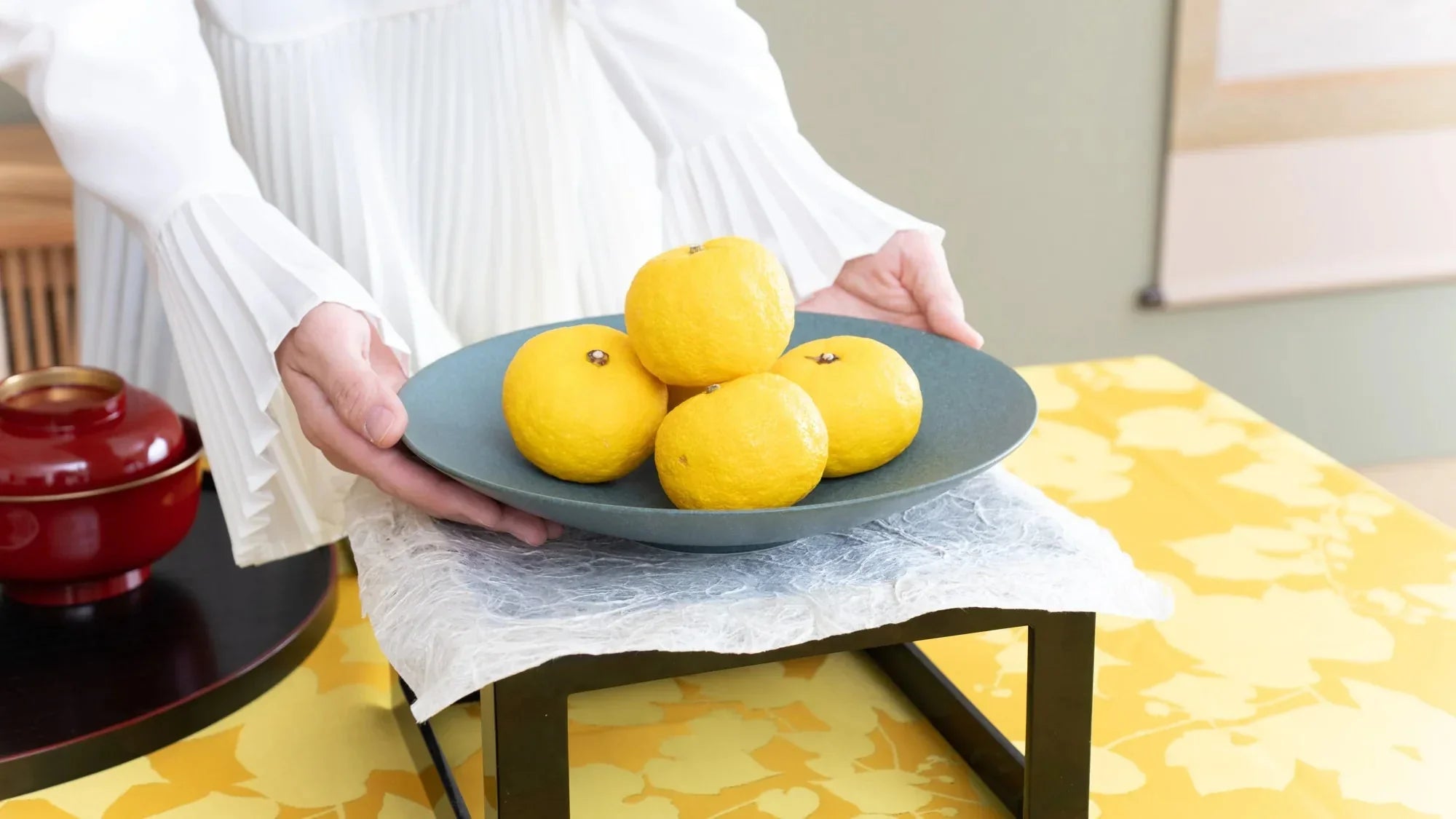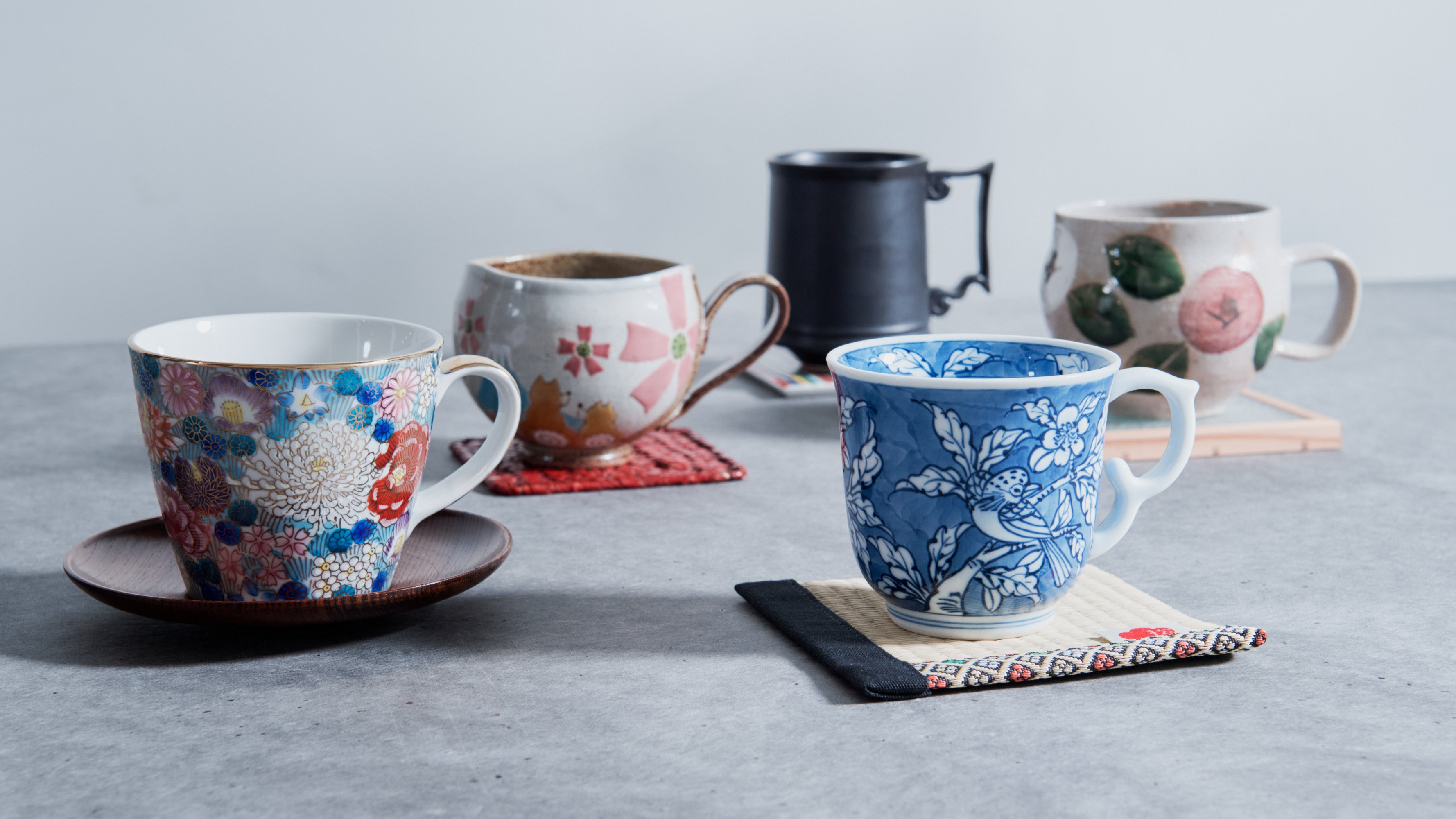
Guide to Kanazawa Gold Leaf
Written by Team MUSUBI
In Japan, kinpaku (gold leaf) has adorned sacred spaces since ancient times, with gilded accessories excavated from the Kofun period (250-538 CE) tombs and gold symbolizing eternity in temple architecture. Today, the Kanazawa Yasue Gold Leaf Museum offers Team Musubi an immersive look at these time-honored methods, from delicate hammering to fine art ornamentation, demonstrating the craft’s blend of rigorous tradition and refined elegance.
True appreciation begins with a contemplative gaze: observe how light skims each ultra-thin sheet, lending depth to every curve and contour. As you explore gilded screens, lacquerware, and contemporary installations, allow the shimmer and subtlety of kinpaku to transport you through centuries of Japanese artistry.
Table of contents
History of Kinpaku Gold Leaf
In the heart of Japan's Hokuriku region lies Kanazawa, a city where tradition and artistry converge in a luminous craft: kinpaku, or gold leaf. While gold leaf has adorned temples, artworks, and artifacts across civilizations, Kanazawa's kinpaku stands out for its exceptional quality and the centuries-old techniques preserved by its artisans.

The origins of kinpaku in Kanazawa trace back to 1593, during the Bunroku era. Maeda Toshiie, the first lord of the Kaga Domain, sent an order from his post in Nagoya (situated in the present Saga prefecture) to produce gold and silver leaf for ceremonial purposes. This directive marked the inception of gold leaf production in the region. Nature herself seemed to conspire in Kanazawa's favor. The region's high humidity and soft, mineral-rich water proved ideal for the intricate paper preparation process that forms the foundation of gold leaf production. In an art where microscopic details determine success or failure, these environmental factors provided craftsmen with an almost mystical advantage over their competitors elsewhere in Japan.
Yet it was adversity, not advantage, that truly forged Kanazawa's dominance. In 1696, the Tokugawa shogunate established the hakuza (gold leaf guild) in Edo (which is present-day Tokyo), implementing the draconian Hakuuchi Kinshirei (Gold Leaf Prohibition Decree) that outlawed gold leaf production anywhere except Edo and Kyoto. As a result, the production of gold and silver leaf in the Kaga Domain ceased for about 100 years.

Consumed by fire in 1808, Kanazawa Castle’s Ninomaru Palace paradoxically ignited the city’s golden destiny. The massive reconstruction project required vast quantities of gold leaf, prompting authorities to summon skilled craftsmen from Kyoto. This influx of expertise catalyzed local ambitions, inspiring Kanazawa's artisans to establish their own legitimate industry despite continued shogunate resistance.
The Meiji Restoration of 1868 finally shattered the chains of prohibition. With the shogunate's collapse, the gold leaf monopoly dissolved, liberating Kanazawa's suppressed industry. As production in Edo ceased and Kyoto's workshops gradually declined, Kanazawa emerged from the shadows to claim its destined throne. The city's artisans, their skills honed by decades of practice, suddenly found themselves without competition.
Today, Kanazawa produces 100% of Japan's gold leaf, a monopoly that stands as a testament to the power of perseverance. The city's workshops continue to employ methods that would be recognizable to their Edo-period predecessors, yet their products grace everything from traditional Buddhist temples to contemporary architectural marvels.
This living legacy is not confined to the hands of artisans alone—it is also actively preserved, celebrated, and shared with the public.
Kanazawa's dedication to preserving the kinpaku tradition is evident in institutions like the Kanazawa Yasue Gold Leaf Museum. Here, visitors can delve into the history, techniques, and cultural importance of gold leaf.
Kanazawa: Japan’s Golden Heartland
With a deep sense of curiosity about the enchanting world of gold leaf and the masterful craftsmanship behind it, Team Musubi set off on a rare sunny day to the historic city of Kanazawa in Japan’s Hokuriku region. Our destination: the Kanazawa Yasue Gold Leaf Museum, nestled in the heart of the city.

This institution traces its origins to the vision and dedication of Yasue Takaaki (1898–1997 CE), a revered gold leaf artisan who sought to preserve the pride and legacy of his craft for future generations. Using his personal resources, Yasue collected a remarkable array of tools and artworks related to gold leaf production. That humble beginning has since grown into what is now Japan’s only public museum devoted exclusively to the art of gold leaf.
We had the privilege of touring the museum under the generous guidance of the museum director, Kawakami Akitaka, whose insights allowed us to delve deeply into the rich history and craft of Kanazawa’s gold leaf tradition. Through our visit, we witnessed firsthand the refined techniques passed down through generations and felt the profound cultural weight this shimmering craft continues to carry.

As we stepped into the first floor of the museum, our eyes were immediately drawn to a glimmering presence by the window. There, a set of gold-leaf-adorned furniture stood quietly alongside an antique phonograph. With a warm smile, the museum director Kawakami explained, “This phonograph is on loan from the Kanazawa Phonograph Museum.” The speaker horn, elegantly flared like a blooming flower, had been transformed by its gilded finish—no longer merely a relic of the past, but something luminous. Bathed in natural light streaming through the window, the gold leaf shimmered subtly, as though responding to music not yet played.
What had once been a quiet, unassuming object now radiated a sense of sacredness, its surface whispering stories of craftsmanship, memory, and renewal. This was only the first floor of the museum—our journey into the world of gold leaf had only just begun.

As we continued up the stairs, something unexpected caught our eye—a solitary umbrella hooked casually over the railing. Sensing our curiosity, the director chuckled and said, “It’s not a forgotten umbrella, I promise. It’s a piece created by the students from the local art university.” Tracing the umbrella’s tip downward, we discovered a delicate pool of gold beneath it—an artful representation of rain rendered in gold leaf. Within the shimmering puddle, tiny cat paw prints trailed off as if a curious feline had just passed through moments before.

As we ascended toward the second-floor gallery, we looked up—and there it was: a golden dome suspended high above, glimmering like a celestial body. Composed of 600 meticulously applied sheets of pure gold leaf, the dome radiated a quiet brilliance that seemed to transcend materiality itself.

It hovered above us like a full moon caught mid-glow, or perhaps a sun distilled into stillness—its light falling not in harsh beams, but in delicate, diffused warmth. Nearly everyone who passed beneath it seemed compelled to gasp softly, struck by the sheer beauty and craftsmanship it embodied. The dome was more than decoration—it was a luminous testament to the poetry of gold.

We then stepped into the world of gold leaf craftsmanship—a world where breathtaking delicacy is born from centuries of discipline and devotion. Here, we learned how a single sheet of gold can be transformed, layer by layer, until it becomes astonishingly thin, just one ten-thousandth of a millimeter. That level of refinement isn't simply the result of technique, but of a deep, time-honored collaboration between artisans.

As Director Kawakami explained, the process of creating gold leaf cannot be accomplished by a single craftsperson alone. It requires the combined expertise of two distinct kinds of artisans: the zumiya and the hakuya. The zumiya begins by melting pure gold along with carefully measured amounts of silver and copper, heating the mixture to around 1300°C (2372°F) to create an alloy. The exact proportion of each metal is determined by the intended use of the gold leaf, subtly altering its final hue, from warm and radiant to soft and muted.
The resulting alloy is then transformed into a thin ribbon known as nobegane. Using a rolling mill, this metal strip is repeatedly pressed and thinned until it reaches an astonishing delicacy—about one-twentieth of a millimeter thick. Once the desired thinness is achieved, the ribbon is cut into uniform squares approximately five centimeters wide.
Each piece is carefully placed between sheets of sulfate paper, then stacked—200 sheets to a bundle—and wrapped in traditional shamisen skin. This bundle is then placed into a specialized machine called the zumiuchi-ki, which evenly beats and flattens each piece to ensure consistent texture and finish.

After undergoing several rounds of precise hammering and trimming, the material is finally cut into larger squares, about 20 centimeters across. This final product is referred to as uwazumi.

The next stage of the process is entrusted to the hakuya. Here, the 20-centimeter (7.9-inch) squares of uwazumi—the finest quality foil produced in the zumiya—are meticulously trimmed into nine to twelve smaller pieces, varying in size and shape, from perfect squares to slender rectangles. This careful segmentation is essential for ensuring that the final gold leaf sheets are uniform in weight, a key requirement for their eventual application.

Following this, the shikiire phase begins. During this step, the trimmed foil fragments are artfully arranged onto sheets of hakuuchigami. These paper sheets are designed specifically for gold-beating, and the composition of foil pieces must be precisely laid out to balance coverage and thickness.

Next comes the komauchi stage. To prevent any misalignment between the foil pieces and the supporting paper during the intense beating process, the bundle is tightly wrapped in supple rolled leather and securely fastened with cowhide bindings. This tightly bound package is then placed into a beating machine, known as a hakuuchiki, where it is pounded and extended until each sheet reaches its target size of approximately 10 centimeters (3.9 inches) square—delicate yet resilient, and ready for the next stage of transformation.

After the uchimae (final hammering) stage and intricate procedures, the gold is finally transformed into what is known as entsuki kinpaku, or “edged gold leaf.” This term—entsuki, meaning “with borders”—derives from the method of its final assembly: each delicate sheet of finished gold is placed one by one onto a backing paper that is deliberately cut slightly larger than the leaf itself. The resulting narrow margin frames the gold like a subtle border, enhancing both its beauty and its practicality.

Throughout the entire process of gold leaf production, one element plays a quietly indispensable role: paper. Far more than a mere supporting material, the paper used in this craft must possess extraordinary durability and tensile strength. As the museum director pointedly remarked, “To make gold leaf is, in essence, to make paper.”

Indeed, the paper itself is the unsung backbone of the entire operation. Its creation demands both time and a remarkable degree of craftsmanship—an elaborate sequence of treatments, refinements, and patient labor. When we reflect on the traditional methods of papermaking, we can’t help but marvel: how did artisans of the past ever conceive of blending such seemingly unrelated materials to engineer paper so robust, so precisely suited to the exacting needs of gold leaf work?
This ingenuity speaks not only to technical mastery, but to a kind of creative intuition—an ability to see possibility in the improbable, and to coax from nature the very substance that would support one of Japan’s most delicate and dazzling traditional arts.

After gaining a deeper understanding of the intricate process behind gold leaf production, we moved on to the next exhibit hall. This section took on a more playful and interactive tone, cleverly designed with a variety of engaging installations that offered a tactile and visual exploration of gold leaf.

Here, we were invited to see, touch, and compare—weight of solid ingots such as gold, silver, copper, and aluminum, while gold leaf samples of varying purities revealed subtle yet distinct differences in color, texture, and pliability. It was fascinating to observe how even minute changes in composition could dramatically alter the material’s character.
This hands-on experience not only demystified the science behind the craft but also deepened our appreciation for the meticulous choices artisans must make—from alloy ratios to thickness—to achieve the desired balance of beauty and function in each delicate sheet of foil.

We also had the opportunity to admire a remarkable array of traditional crafts adorned with gold leaf—from opulent folding screens shimmering with intricate patterns, to sacred Buddhist altars radiating a quiet, spiritual majesty. Each piece reflected not only the dazzling aesthetic potential of gold but also the profound cultural significance it holds in Japanese artistry.

The gold leaf was never used merely for decoration; it seemed to elevate each object into something timeless, almost sacred. In the folds of a screen or the curves of a lacquered shrine, the gold caught the light in ways that suggested movement, memory, and reverence.

Gold leaf, we learned, is not just a product of skill or heritage. It is a devotion—measured in microns, refined through centuries, and burnished by human hands into something that transcends the material. In the gleam of a gilded screen or the hush of a golden dome, we saw not only beauty, but continuity—a fragile thread connecting the past to the present, craft to culture, and the ephemeral to the eternal.
Kanazawa Yasue Gold Leaf Museum
1-3-10 Higashiyama, Kanazawa, Ishikawa








Leave a comment
This site is protected by hCaptcha and the hCaptcha Privacy Policy and Terms of Service apply.